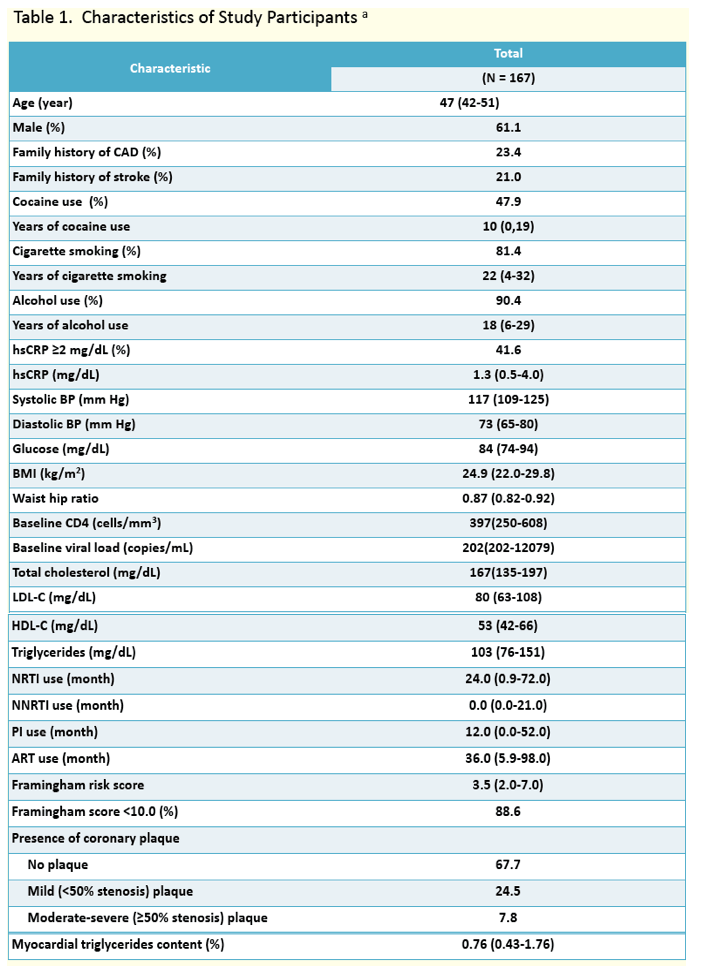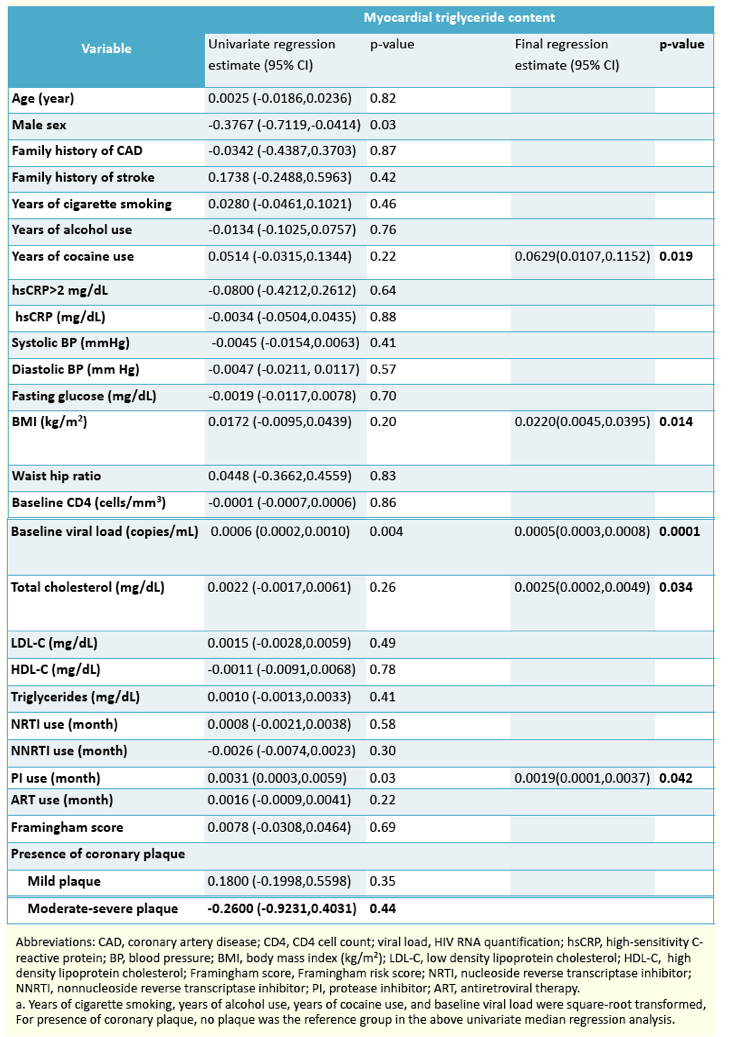 |
 |
 |
| |
Cardiac steatosis (the fatty heart) in cardiovascularly asymptomatic persons with HIV infection
|
| |
| |
Reported by Jules Levin
7th IAS Conference on HIV Pathogenesis, Treatment and Prevention, June 30-July 3, 2013, Kuala Lumpur
Shenghan Lai
Johns Hopkins University School of Medicine, Baltimore, United States
ABSTRACT
Background: The literature indicates that cardiac steatosis in common in patients with diabetes/ obesity, and cardiac steatosis may be lead to cardiomyopathy. However, cardiac steatosis has never been reported in persons with HIV infection. The purpose of this study was to examine cardiac steatosis in persons with HIV infection and identify factors associated with cardiac steatosis.
Methods: Between August 2009 and February 2012, 167 HIV-infected study participants aged 21 years or older, without symptoms or clinical evidence of cardiomyopathy or coronary artery disease from Baltimore, Maryland, were enrolled in a study investigating the effects of antiretroviral regimens and cocaine use on cardiac steatosis. Proton magnetic resonance spectroscopy was performed to noninvasively quantify myocardial fat content. Information about sociodemographics, drug-use behaviors, and medical and laboratory parameters were obtained.
Results: The median myocardial triglyceride content was 0.76% (IQR:0.43-1.76%). Two of 167 had diabetes and approximately 50% were overweight or obese. The presence of coronary plaque was not found to be associated with cardiac steatosis. The median regression analysis suggested that years of cocaine use, body mass index, baseline HIV viral load, total cholesterol, and duration of protease inhibitor were independently associated with the accumulation of myocardial triglyceride.
Conclusions: Myocardial triglyceride content is elevated in those who were long-term cocaine users, who were long-term PI users, and whose cholesterol and HIV viral load levels were high. Since the above factors may be preventable, the study's findings highlight the importance of conducting further mechanistic research and implementing enhanced intervention strategies, including cocaine cessation.




|
| |
|
 |
 |
|
|